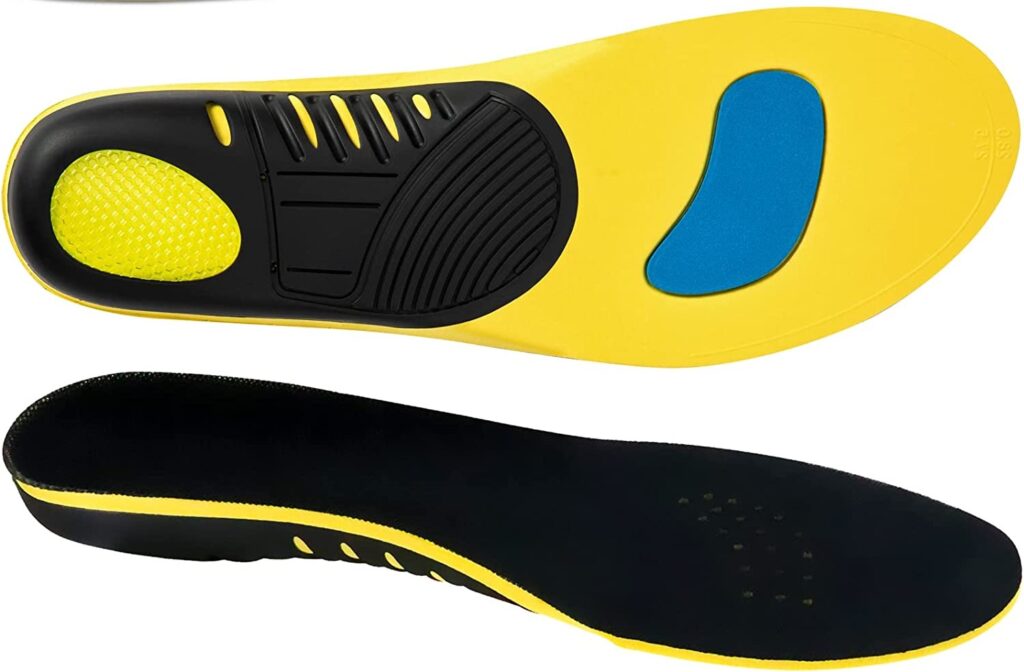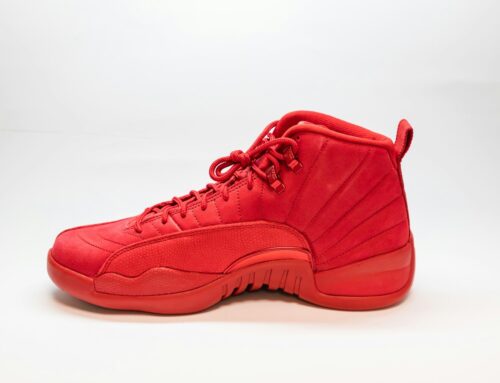Last Updated on December 14, 2023 by
Most of us do not consider basketball insoles when choosing basketball shoes. Some people buy basketball insoles because their shoes are too big and they need cushions, or they feel the shoes are too hard to wear and a cushion will make them more comfortable.
As a matter of fact, buying basketball insoles is also very particular, since many players customize insoles themselves, as ill-fitting insoles will result in empty footsteps, affecting the game’s performance. Ordinary people do not require customization, but some important aspects still need attention. For example, insole fit, shock absorption, etc.
Now let’s look at what you should know about purchasing basketball insoles.
As long as you buy good basketball shoes, you can protect yourself well or perform well in sports; however, we may have always had a misunderstanding that basketball shoes are the most important thing, Basketball insoles are essentially used to cushion hard or too big shoes, or to cushion hard shoes with soft cushions, or to replace worn out insoles on shoes, However, how many people know that insoles are crucial? The first contact point of shoes is the ground, followed by the insole, and the first contact point of our feet is the insoles. Insoles are directly responsible for feedback, landing stability, and comfort of our feet. Often, the first line of protection for sports involves insoles.
Do you know what makes a good pair of insoles? There is no standard answer, but there are several guidelines to follow;

Insoles should be well fitted
Fit is important, so why is it important? Some NBA or professional athletes will even tailor their own insoles to fit their shoes, with some insoles costing over 5,000 dollars. There’s a good reason for customizing. That’s right, it’s all about fit. The high fit can increase the force-bearing area of the foot, reducing the risk of excessive stretching of the local muscle fascia.
As an example of this, use the following simple physical principles: F=PS, F = force, P = pressure, S = area. Compared to flat insoles (the contact points are concentrated on the forefoot and heel), insole S1 with high fit > S2 (flat insole). Thus, a certain external impact can be minimized, minimizing pressure on the foot sole.
F=PS, F means force, P means pressure, and S means an area, and in comparison with flat insoles (the contact points are concentrated on the forefoot and heel), the insole with high fit can reduce the pressure on the sole of the foot to the lowest possible level. a. There must be arch support; b. The insole is not completely flat, and it needs to wrap around the heel area; c. Metatarsal support.
There is a need for simple physical principles for a specific explanation:
F=PS, F = force, P = pressure, S = area. Compared to flat insoles (the contact points are concentrated on the forefoot and heel), insole S1 with high fit > S2 (flat insole).
So what kind of insole qualifies as a high-fit insole?
*Arch support is required.
*An insole should not be completely flat and must wrap around the foot, especially the heel.
*Metatarsal support. Simply put, it covers the whole foot and minimizes the neutral area.
The insole provides good shock absorption
It is necessary for certain shoes to have an insole that absorbs shock, especially quite hard shoes like the AJ1 and AJ6. TP9 is the main example of the difference between shock absorbers and cushions when choosing an insole. Many JRs will emphasize the softness of the insole when choosing an insole, especially the strong feeling of stepping on the shank on the foot.
From this perspective, very soft insoles can be comfortable, but they are not suitable for sports, especially for prolonged periods. It is easy for them to cause fatigue and soreness in the feet. As a result, they cannot be used as professional basketball insoles. So, what are the characteristics of professional basketball shock-absorbing insoles? First, they should be soft, which is a consensus, since softness increases impact duration and helps achieve shock absorption (P=Ft, where F is force and t is time). Second, they should be hard. As many people might wonder, how can hardness contribute to shock absorption? This is how it works: if the insoles are too soft, they will have the same effect as TP9, being comfortable but not sufficiently supportive. Hard parts provide support and act as hardness valves.
How can we achieve a certain level of softness while also maintaining the required hardness? In fact, many insole manufacturers in China have already achieved this. Insoles are divided into framework parts and shock-absorbent parts. In most cases, the framework is made of EVA material, and the shock-absorbing pads are placed at the bottom. By focusing on the forefoot and heel, this structure reduces foot impact. Combining softness and hardness can provide excellent shock absorption. The rigid part provides good support and can also act as a softness valve while the soft part absorbs the impact force. In China and abroad, most manufacturers are adopting this design, which absorbs both shocks and materials. Materials and structures should be combined in more advanced shock absorption methods. Nevertheless, insoles should have a balance between softness and hardness.
Arch shock absorption effect
In fact, this point falls under the topic of shock absorption, but since arch shock absorption requires a separate discussion, it is included as the third point. What is the purpose of arch shock absorption in basketball insoles? Arch shock absorption is necessary. As a result, the supportability of the arch can increase the contact area and enhance its shock absorption properties and resistance to tension (especially excessive tension). In the past, I have come across a comprehensive introduction to arch design online. “Arch pads are designed to protect the feet during exercise, not just the arch.” This statement can be divided into two parts: 1. In order to protect the arch, we only need to fill it with enough padding to prevent damage. The second. As part of protecting the arch during exercise, it is necessary to support the arch and provide adequate shock absorption. In order to provide support (a certain level of hardness) and shock absorption (with a certain degree of deformation capability), arch shock absorption must meet higher requirements. The coexistence of support and shock absorption has been discussed previously, and it is difficult to achieve with only one material; two materials must be combined. In fact, many integrated insoles, including the TP9 we mentioned earlier, as well as Nike or other high imitation or domestic insoles, struggle to achieve this effect. It can easily lead to arch fatigue if not done correctly. This area is divided into two parts by many insole manufacturers: the support part and the shock absorption part. The problem is effectively solved in this way. A few examples are the basketball insoles from Decathlon, Sofsole, and others. I was most impressed by the use of three different density materials in the arch area of the Spenco GRF insole, which divided the arch’s shock absorption effect into three levels. It is truly admirable to see this kind of design. The arch area should be designed to absorb force as well as provide support, rather than only focusing on softness.
Heel wrapping
Heel wrapping overlaps with the first point, but is emphasized separately for two reasons:
1. We do not give enough attention to heel wrapping, because most discussion focuses on softness.
2. The heel wrapping of the insole influences not only its fit but also its ability to resist external forces and maintain balance. The effect is similar to that of high-top shoes.
Conclusion
Choosing basketball insoles is not a one-size-fits-all process. Every person’s needs, purpose, and shoe characteristics are different. The choice of insoles should be based on our specific needs, or we may decide not to use any at all. Basketball insoles, however, not only improve performance but also demonstrate a higher level of responsibility towards your body. There is a misconception that good basketball insoles are only soft. Four characteristics should be present: excellent shock absorption, arch support, and strong heel lockdown. A balance must be struck between hardness and softness when selecting these four characteristics. Basketball insoles should be made up of multiple components instead of just one compressed pad, utilizing different materials in different areas to meet the needs of the player.






Leave A Comment